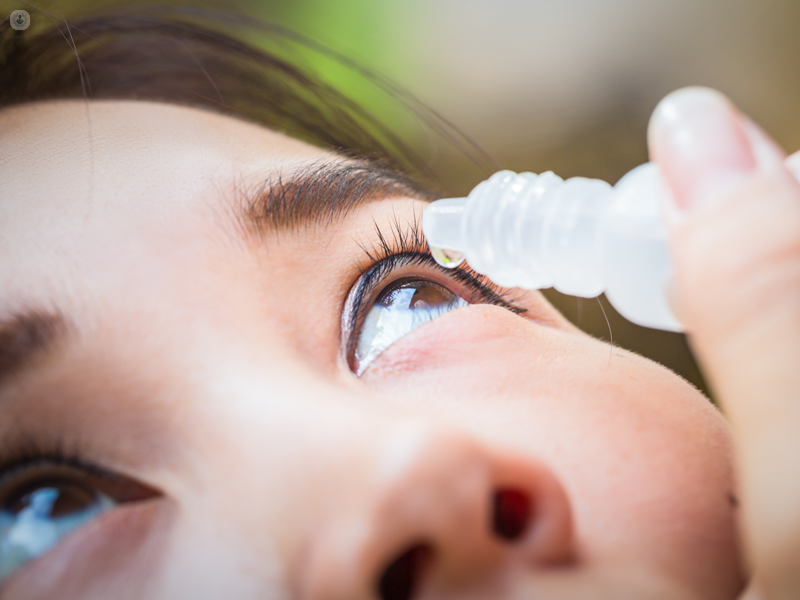

What is it?
Blepharitis is an inflammatory condition of the eyelids which, if occurring alongside with conjunctivitis (or pink eye), may also be called blepharoconjunctivitis. In this case, the inflammation will spread to the eyelids and to the conjunctive membrane.
Blepharitis can become chronic, thus being recurrent and resistant to treatments. This is why it is very important to prevent it, by following some hygienic and general rules. Chronic blepharitis can cause red eyelids and crusting of the eyelashes and is more common among the elderly.

Prognosis
Blepharitis usually lasts a couple of weeks; however, the condition may become chronic. In this case, symptoms can be kept under control but you won’t be able to eradicate them completely. Proper eyelid hygiene is extremely important to prevent recurrent blepharitis.
What are the symptoms?
The most common symptoms of blepharitis show up on the eyelids. These may include:
- a burning sensation
- a hot sensation
- itching
The itching usually makes you scratch your eyelid. However, it is essential that you avoid touching the swollen area with your hands, because this may spread the inflammation and, in some cases, cause some skin microlesions.
In case of severe blepharitis, symptoms may also include:
- swelling of the eye
- localised pain, due to frequent and irregular blinking
- photophobia (light sensitivity)
How is it diagnosed?
A diagnosis can be made by looking at some signs on your eyelid - flaking of skin on eyelids, crusting of the eyelids and, in the most severe cases, even ulcers - and by telling your GP about the symptoms you have. Furthermore, an eye specialist may examine your eyes with a slit lamp.
What causes it?
The most common causes for this condition are:
- secretion imbalance of the Meibomian glands
- refractive errors, such as astigmatism and far-sightedness
- skin disorders (such as seborrhoeic dermatitis)
- disorders related to the digestive tract (problems with the digestion process or vitamin deficiency)
- diabetes
- high levels of fats in the blood
- allergies and environmental factors (smoking, fine dusts or particles)
- bacterial infections
How can it be prevented?
Blepharitis can be prevented by following some general hygienic rules, which can reduce the risk of developing this condition.
You should make sure your hands are clean before touching your eyes. If someone in your family starts showing any of the symptoms of blepharitis, you should avoid sharing sheets, clothes or personal hygiene items with them, in order to avoid spreading it.
It is also very important to eat a healthy diet with lots of fruits, vegetables and lean proteins (such as fish or chicken) and to avoid eating too much sugar and caffeinated drinks.
How is it treated?
Blepharitis can be cured with anti-inflammatory eye drops and antibiotics. To make sure you can cure it completely, you should also check your conjunctive membrane, because there could be some signs of keratitis on the cornea. In case of infectious blepharitis, you should avoid using contact lenses, to avoid spreading the infection any further within the eye. Women should avoid using eye cosmetics while treating blepharitis.
Which doctor should I talk to?
If you think you may have blepharitis, you should see an ophthalmologist.
